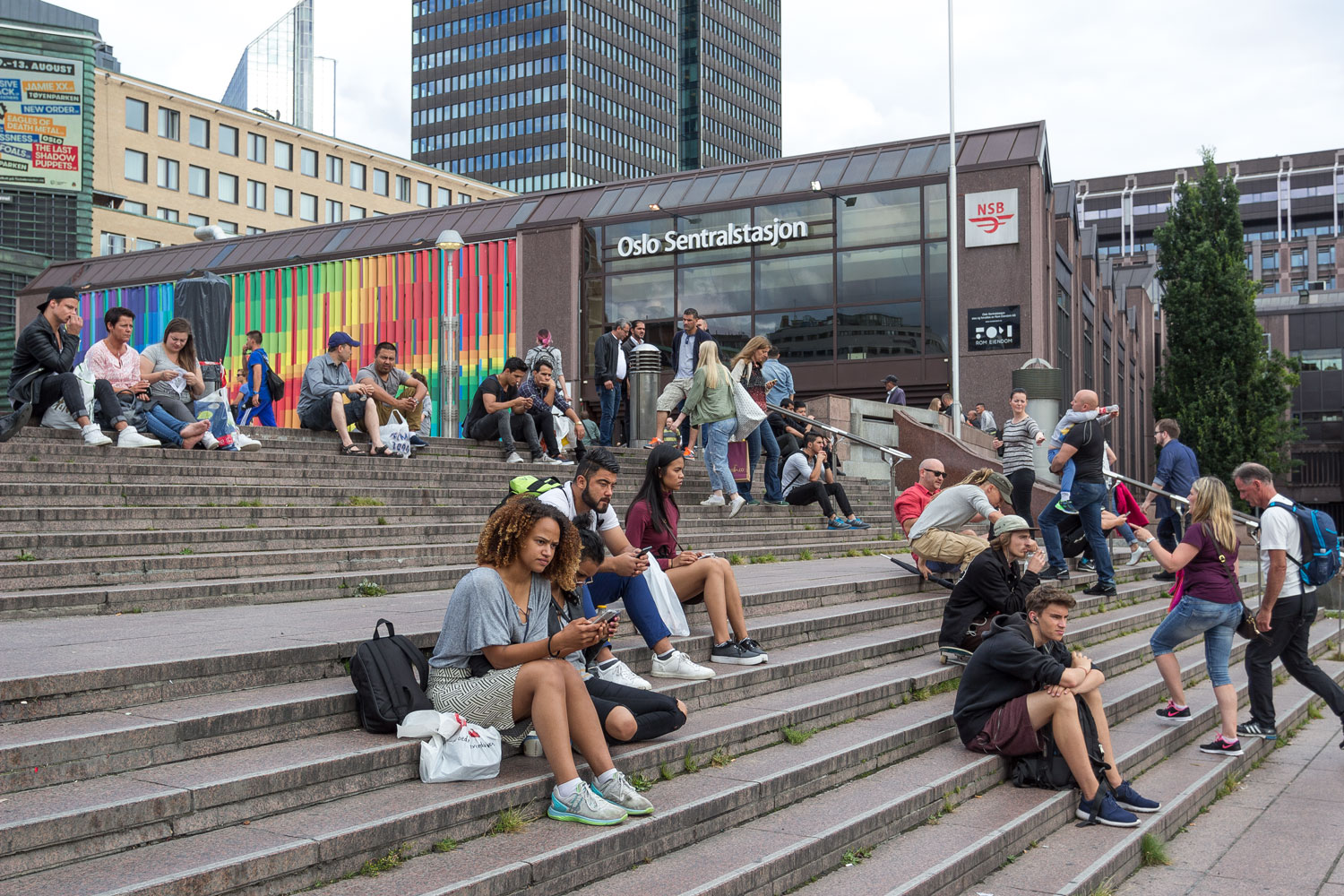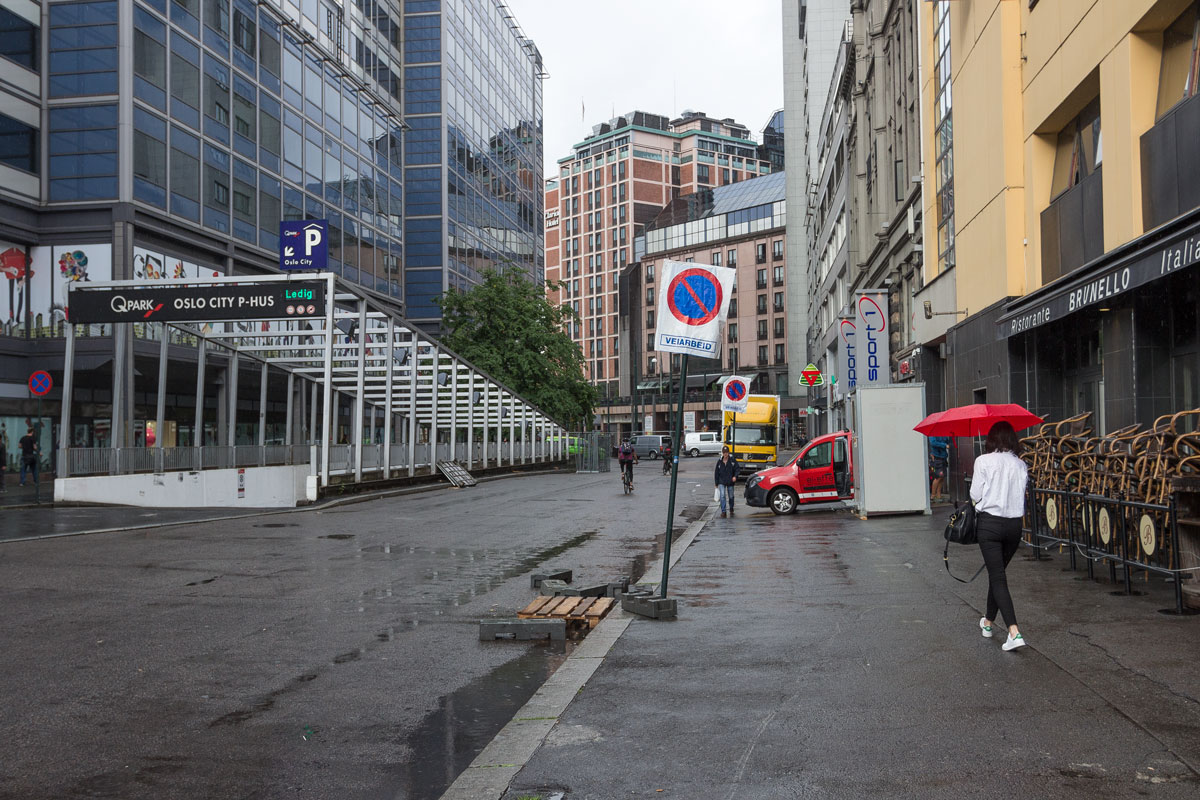Norway
Norway is the wealthiest country in the world, surpassed only by Switzerland and Luxembourg. The GDP per capita here is 7 times higher than in Russia, and everything is incredibly expensive in Norway.
In principle, in most European countries, you can stay in a decent single room for the price of $40 per night. In Oslo, for such a price, you can expect a bed in a hostel dormitory for 6 people.
If a hot dog costs around $2 in neighboring Sweden and an inexpensive lunch at a restaurant is around $7, then in Oslo, a hot dog costs $5, and eating at an Arab cafe is absolutely impossible for less than $15 per person.
What salary do you need to live in Norway? Dear reader, I have checked and reviewed various sources multiple times. It is absolutely true that a fish cleaner earns $3,000 per month here.
Opponents of the free market and supporters of socialism often use Norway as an example: look at the high standard of living in this country, despite the fact that the government’s share in the economy is over half! Therefore, socialism works!
At the same time, they forget that until 1970, Norway was an extremely poor country that produced nothing but sweaters with reindeer and dried cod.
What led Norway to its current wealth? The story is banal and has been told many times: in the early 1970s, there was a sharp rise in oil prices. This rise allowed the USSR to survive for another 20 years, and it also allowed Norway to establish its sovereign wealth fund worth $1 trillion.
One trillion dollars! Only the United Arab Emirates and China have more money in reserves. However, China has over a billion people, while Norway has only 5 million.
A simple calculation shows that even if the Norwegian economy is completely “turned off,” the government will be able to pay each Norwegian $5,000 per month for a period of 3 years.
Victory of socialism? Rather, victory of the money bag.
In Norway, there is already a discussion about reducing taxes and liberalizing the economy. Of course, these colossal reserves will be sufficient to stay afloat for a couple of decades. However, sooner or later, the hollow “Scandinavian miracle” will come to an end, just as it did in Sweden and Finland (with unemployment rates of 24% and 22% among youth a couple of years ago, forcing these countries to initiate reforms), and then a harsh market will begin.
Oslo. Part one
I absolutely don’t understand all the fuss about Norway. Not only is the Scandinavian economic miracle an unfulfilled myth, but Oslo, apart from the economy, is also a downright lousy and unbearably boring city.

Certainly, Oslo has some nice places, such as the old wooden town, the ultra-modern Barcode business district, and the beautiful opera house. But they are more like exceptions, beautiful patches on a worn-out Norwegian blanket. To prevent readers from thinking that there is nothing good in Oslo at all, there is a separate story dedicated to it.

Everyday Oslo is unremarkable. The square in front of the train station.


Behind the train station, a pair of office buildings is concealed amidst a tangle of trolleybus wires.

Within a five-minute walk, the scene is the same as in Moscow.

Here you can also admire the state-of-the-art Norwegian sewer system.
In Oslo, storm drains are only normal in the city center. Once you leave the center, water spills onto the sidewalks, tiles come off, and the asphalt is broken.


A garbage bin occupies half of the sidewalk.

A wooden ramp.

Typical streets outside the center of Oslo.


An old vegetable stall.

A modern vegetable stall.

A pedestrian crossing.

A bus stop.

A bus.

We won’t venture further into the wilderness. Let’s return to the train station. On the other side, it adjoins a classical city center. Unlike beautiful Stockholm, it consists of precisely one and a half streets.

Most people hang out here. The rest of Oslo is quite deserted. Five million people in the whole country is not the same as ten million in one city.

In old Oslo, there are as many beggars and homeless people as in any other European city. I wonder how much money you need to give an average Norwegian homeless person for them to eat decently under Scandinavian socialism?



By the way, bicycle wheels are stolen just as much during socialist construction as in a typical capitalist country.

Modest architecture. City center.





Somewhere in the center. A charming old sign as big as a house.

Lion.

Royal Palace.

Utterly soulless structure. It feels like a plastic model of the palace was meticulously smoothed and molded to the point of bluishness, leaving no trace of life beneath the paint.

In general, having covered the entire way from the station along a straight street to the palace, one can confidently return to the airport and fly out of Oslo to hell, because there is no desire to stay here any longer.
However, one still needs to reach the airport, and the whole of Scandinavia is notorious for outrageously expensive transportation, especially taxis.
Norwegian taxi drivers on average charge an absolutely incredible $3–5 per kilometer. A taxi from the airport will cost around $100. No, the airport is not in Sweden, just 50 kilometers away from the city center.

It’s good that Oslo has a metro. The ticket costs only $5. The subway is completely plain, nothing close to Stockholm’s sophistication.





Super modern Norwegian tram. By the way, if you forgot to buy a ticket in advance, you can purchase it from the driver, but it will be slightly more expensive — $7. Do you want to ride on a rusty Norwegian tram for half the price of a Czar?

I don’t want to either. So we’ll walk to the wooden part of Oslo.


